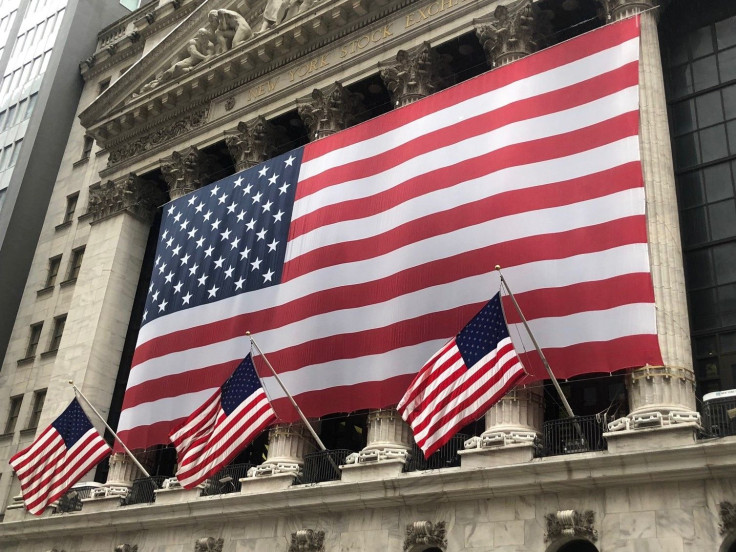Thursday’s Stock Market Close: US Equities Finish Mixed, With Nasdaq Again Beating Broader Market, Yields Plunge

KEY POINTS
- More than 3 million coronavirus cases have been reported now in the U.S. alone
- About 1.314 million Americans filed for unemployment insurance benefits last week
- Wholesale inventories slipped 1.2% in May, after gaining 0.2% in April
U.S. stocks finished mixed on Thursday as initial jobless claims figures were somewhat milder than expected, although covid-19 infections continue to spike. The tech-heavy Nasdaq again led the overall market.
The Dow Jones Industrial Average tumbled 361.19 points to 25,706.09, while the S&P 500 fell 17.89 points to 3,152.05 and the Nasdaq Composite Index gained 55.25 points to 10,547.75.
Thursday’s volume on the New York Stock Exchange totaled 4.13 billion shares with 821 issues advancing, 85 setting new highs, and 2,162 declining, with 15 stocks setting new lows .
Active movers were led by (NIO), Advanced Micro Devices Inc. (AMD) and Ford Motor Co. (F).
Retailer Walgreens (WBA) dragged the Dow down by plunging 7.76% on weaker-than-expected earnings and suspension of a share repurchase program.
More than 3 million coronavirus cases have been reported now in the U.S. alone, accounting for one-fourth of global cases.
Florida reported a surge in coronavirus-related hospitalizations and deaths.
But Dr. Anthony Fauci, director of the National Institute of Allergy and Infectious Diseases, said Moderna's (MRNA) covid-19 vaccine candidate may enter phase 3 trials by the end of July.
About 1.314 million Americans filed for unemployment insurance benefits last week, below expectations of 1.39 million, and a decrease of 99,000 from the prior week. Continuing claims dropped to 18 million from about 18.7 million.
Joe Weisenthal of Bloomberg TV tweeted the numbers were “still incredibly high, but jobless claims [continue] to decline sequentially. And this week they also came in slightly better than expectations.”
But Democratic Congressman Don Beyer of Virginia took a dimmer view of the jobless claims data. “New jobless claims surpass 1 million for 16th week in a row,” he tweeted. “More new jobless claims last week than any week of the Great Recession. The highest unemployment rate in 80 years. Expanded [unemployment insurance] benefits set to expire in 22 days, making things much worse. [Republican Senator Mitch] McConnell refuses to act.”
Christopher Dembik, head of macro research at Saxobank, said of the data: “Initial jobless claims in America's four largest state economies that represent roughly 1/3 of [U.S. gross domestic product] are still at a very high level, at 548,159 [as of July 4]. Recovery of the labor market will be very slow and depend on the evolution of the health crisis.”
The Commerce Department said on Thursday that wholesale inventories slipped 1.2% in May, after gaining 0.2% in April.
“There’s less reason for optimism now than there was in April,” said Jason Thomas, chief economist at AssetMark. “In April, we had a view on how long it would take to get a vaccine, and there was the possibility that we could open the country in stages and see a sustainable recovery. We’re still looking at a vaccine sometime early next year, but it’s become clear that it’ll be very difficult to open without causing a renewed surge” in coronavirus cases.
Overnight in Asia markets finished higher, as China’s Shanghai Composite index advanced 1.39%; Japan’s Nikkei-225 rose 0.4%; and Hong Kong’s Hang Seng exchange climbed 0.31%.
In Europe markets finished lower, as Britain’s FTSE-100 dropped 1.73%, while France’s CAC-40 fell 1.21% and Germany’s DAX slipped 0.04%.
Crude oil futures dropped 3.45% at $39.49 per barrel, Brent crude slipped 0.14% at $42.29. Gold futures fell 0.66%.
The yield on the 10-year Treasury plunged 7.35% to 0.605% while yield on the 30-year Treasury dropped 6.03% to 1.308%.
© Copyright IBTimes 2025. All rights reserved.





















